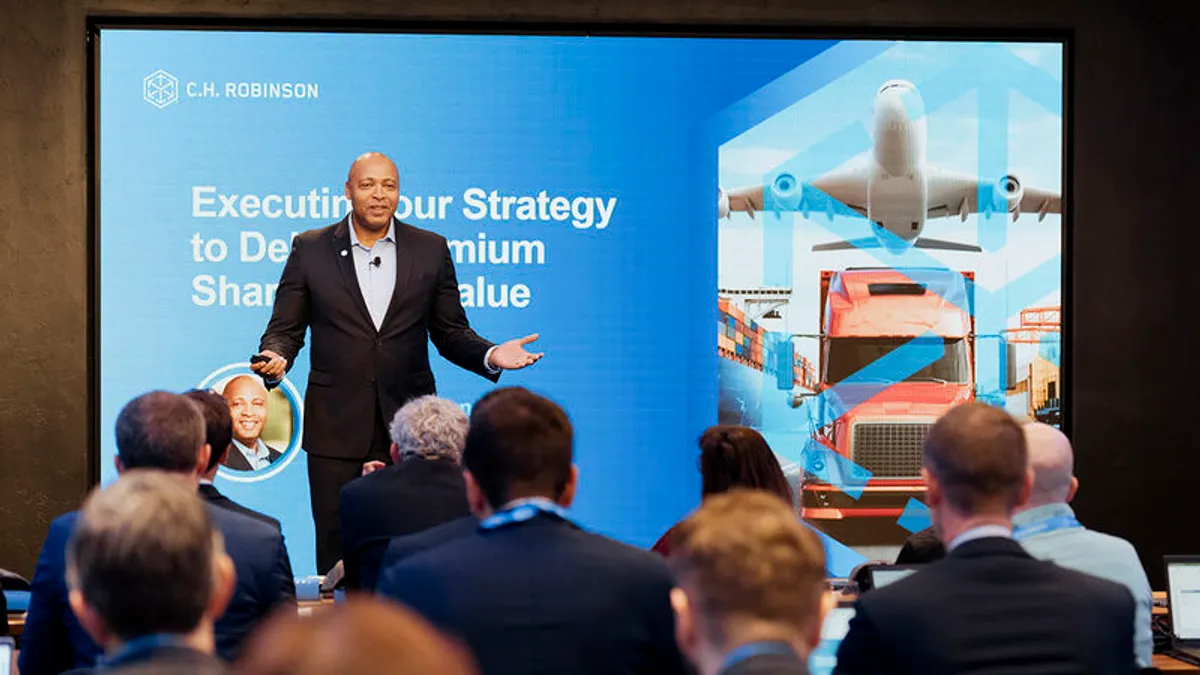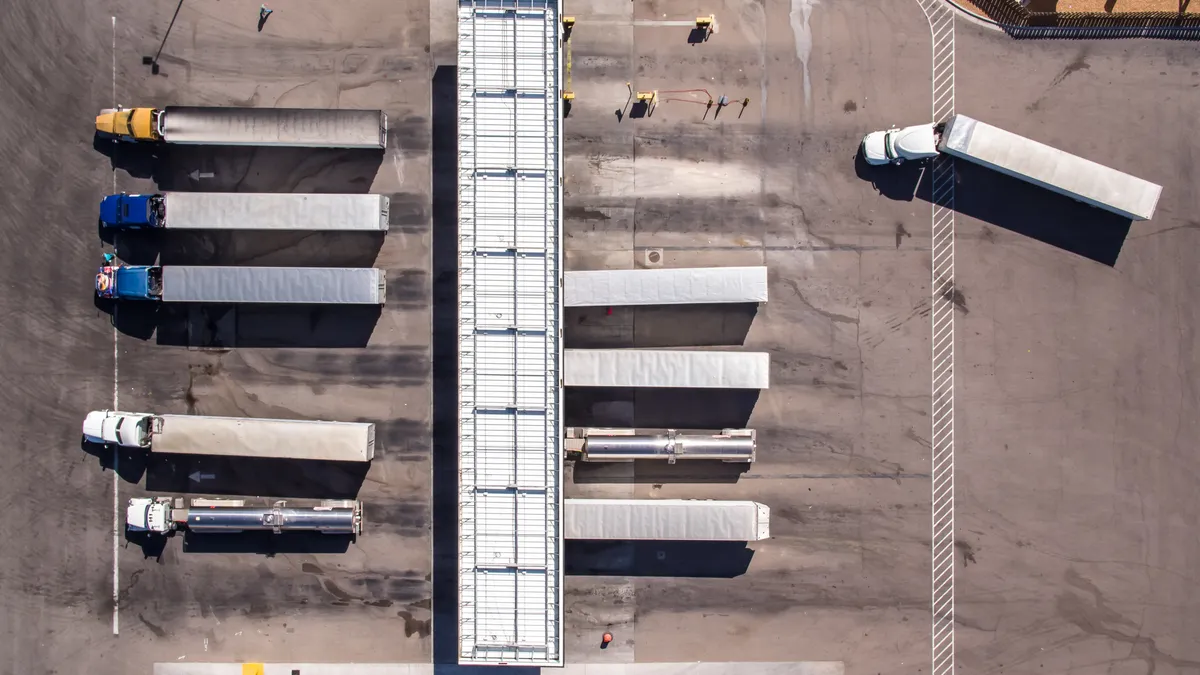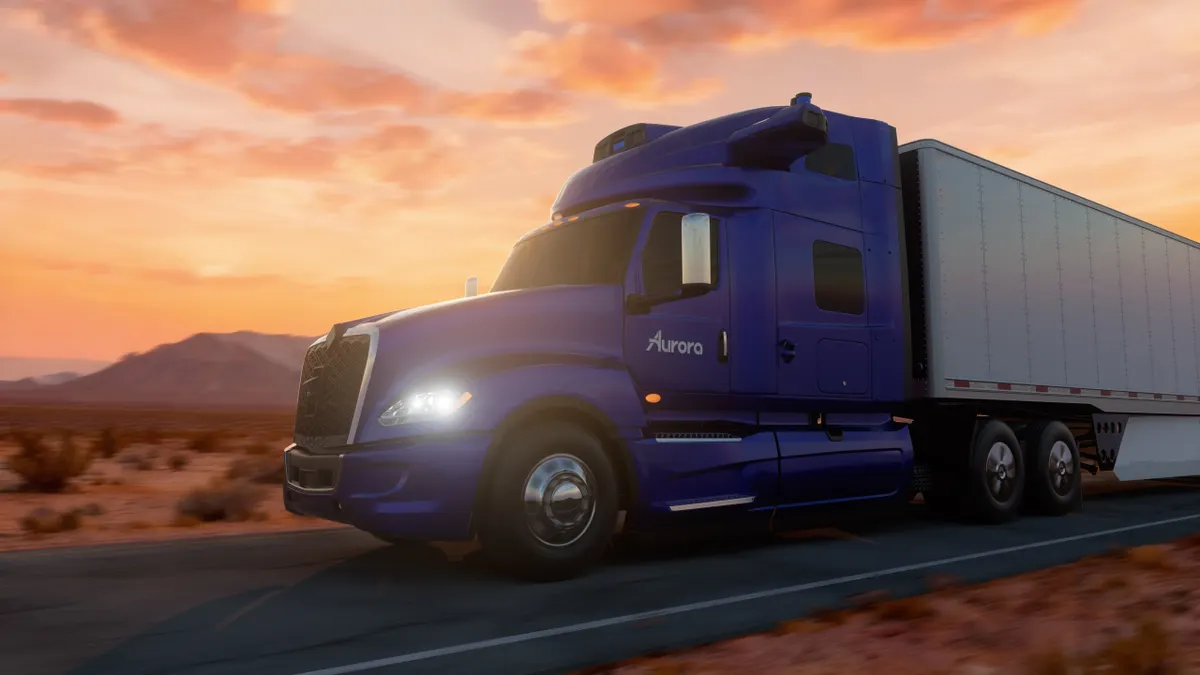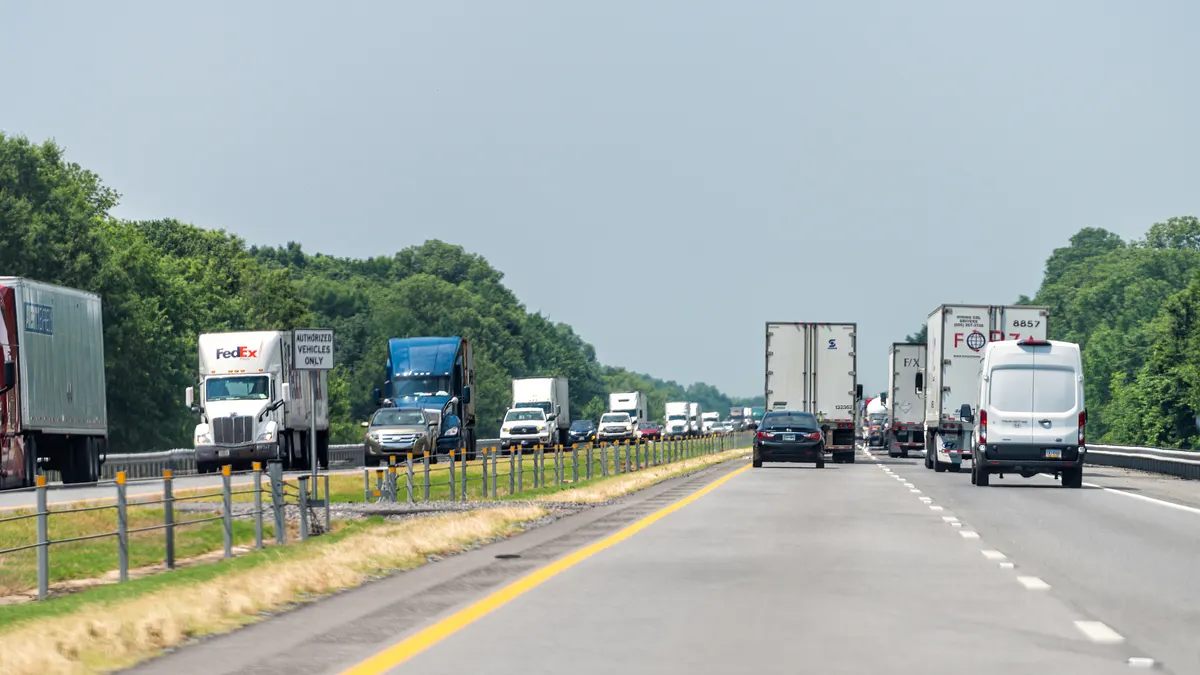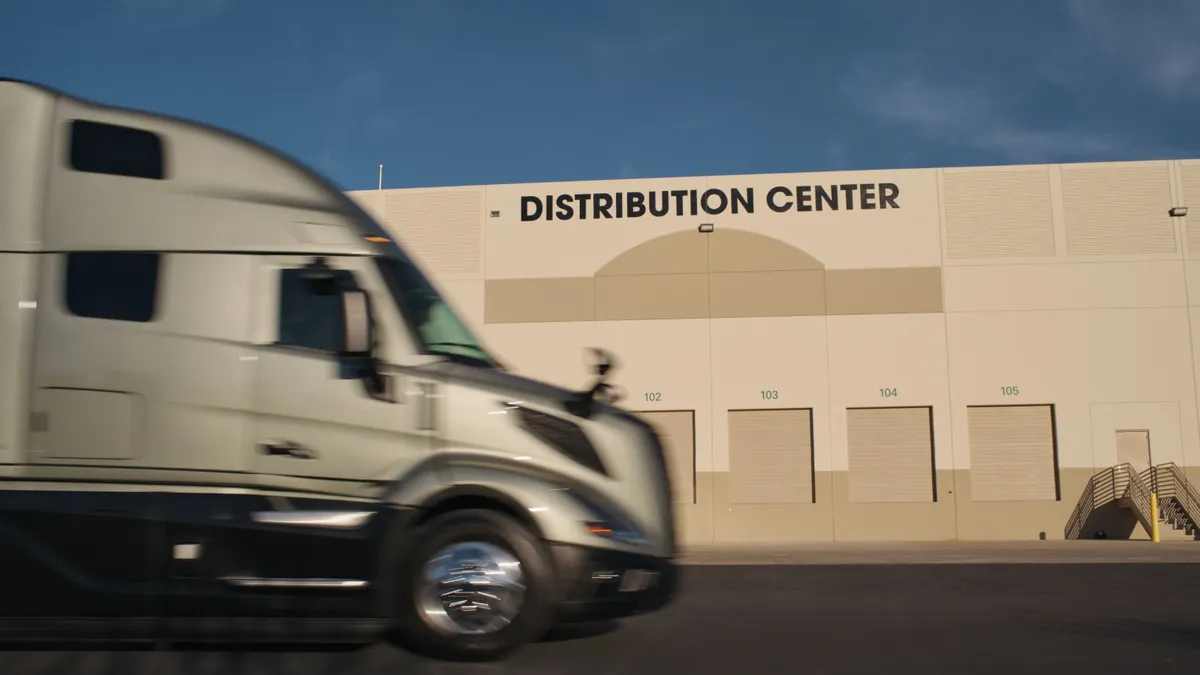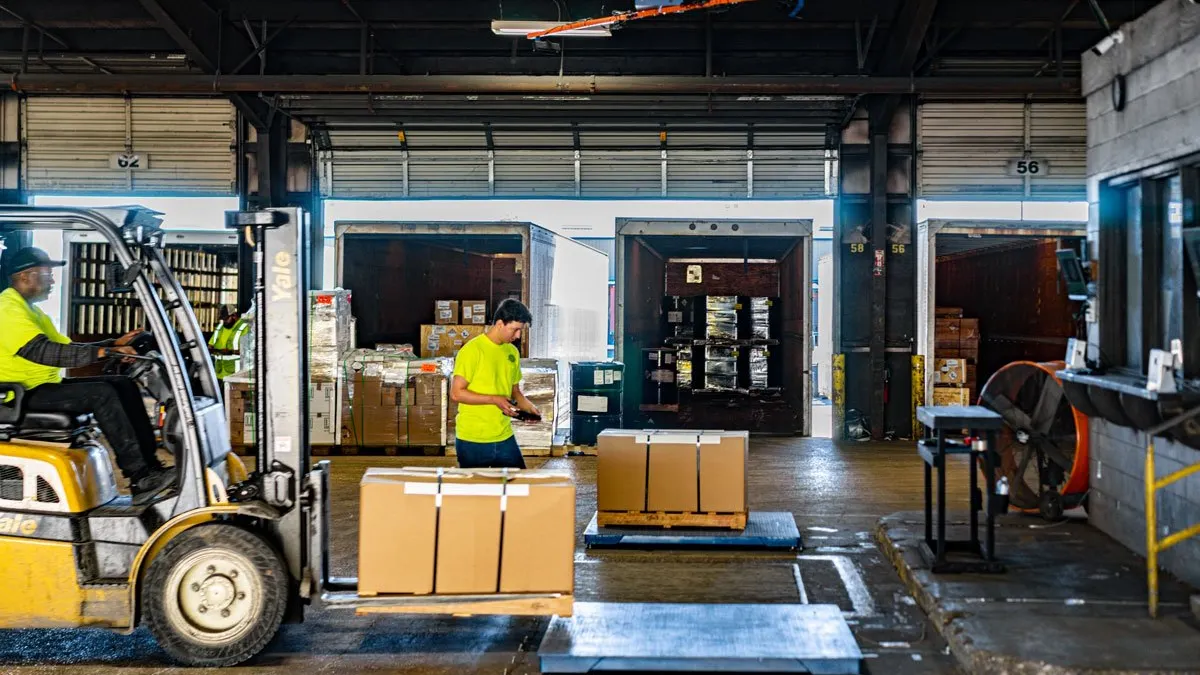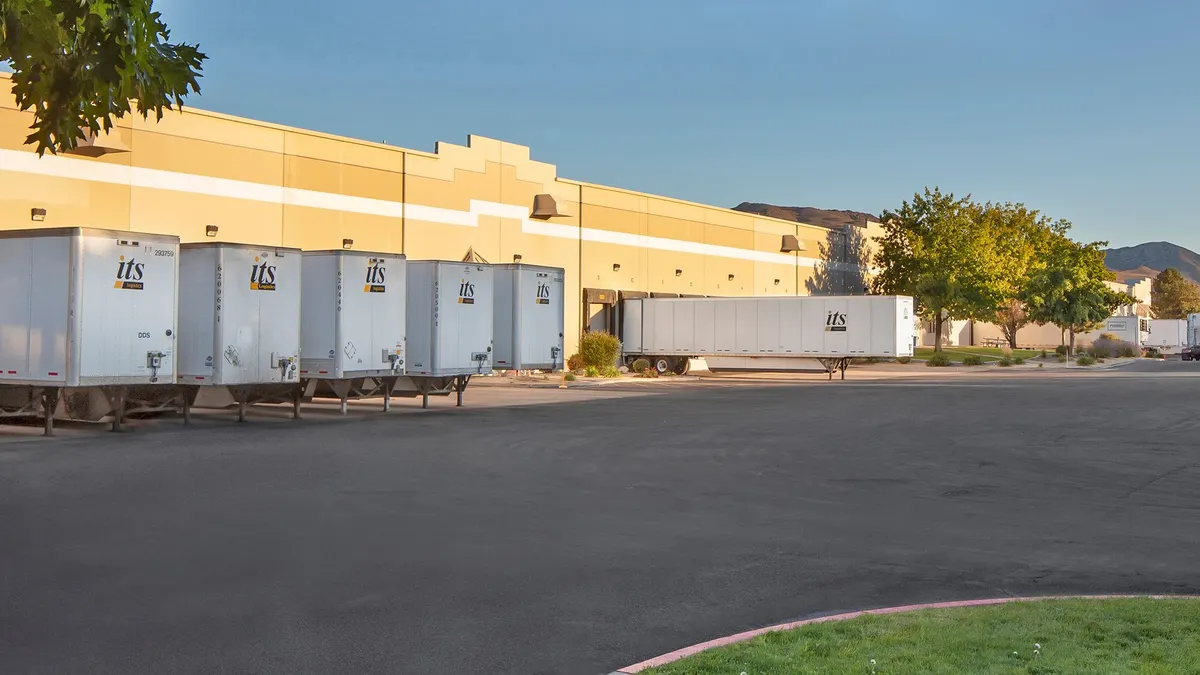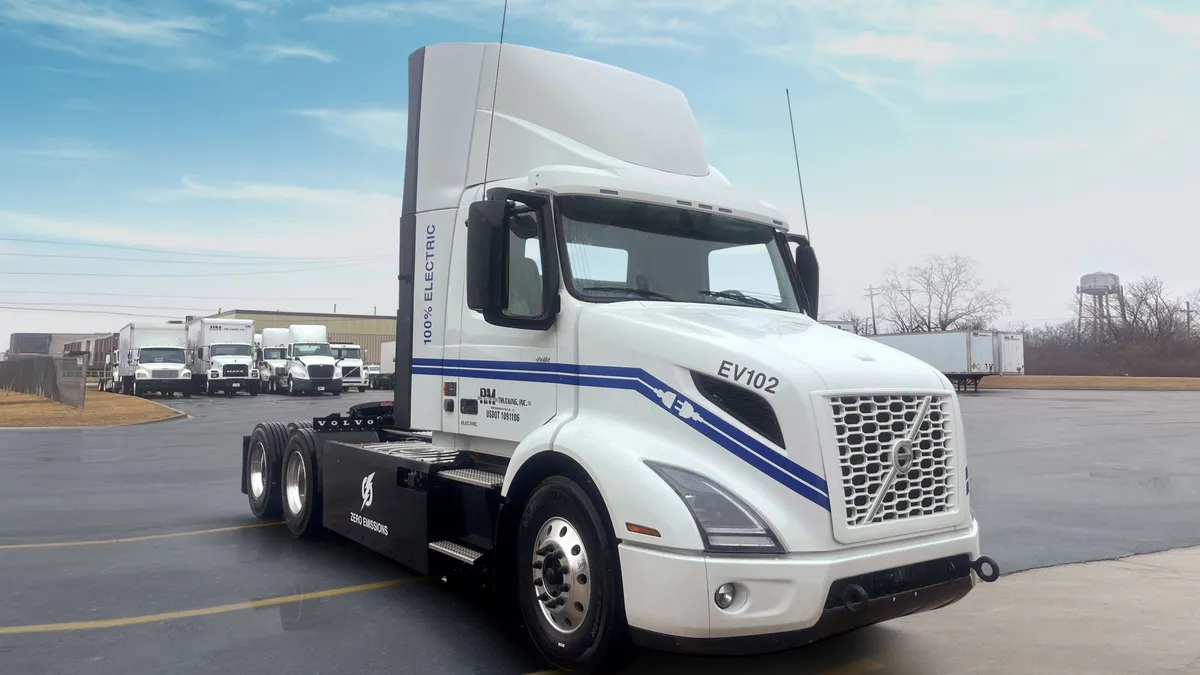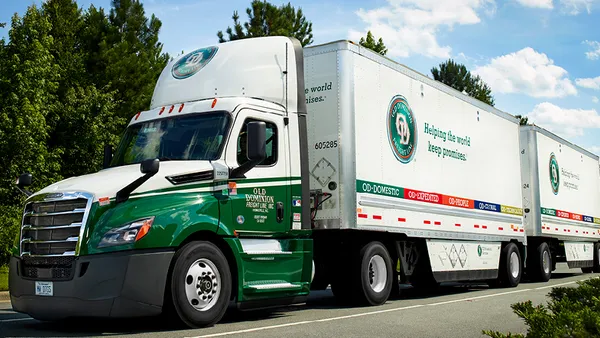This is the second of a two-part interview with C.H. Robinson following the company’s 2024 Investor Day. Read the first part here.
Technology is helping C.H. Robinson Worldwide refocus its workforce more to provide higher value work to recapture and grow market share, CEO Dave Bozeman told Trucking Dive in an interview.
At the company’s Investor Day last month, executives detailed how the company is using digital tools for recruiting and order processing to manage work more efficiently. Artificial intelligence saves the company around 250 to 500 hours each day in order processing, a presentation said.
That’s freeing workers to focus more on customer-facing relationships, allowing the company to switch from a tech-first approach that was focused on its largest customers, Bozeman told investors.
“We're now leaning into the strength of our people in customer- and carrier-facing roles while using generative AI and other innovations to automate operational tasks,” Bozeman said. “This is enabling our people to spend more time on value-added services.”
Bozeman spoke with Trucking Dive in a video interview on Dec. 16 to share more about the company’s use of technology, M&A possibilities and freight cycle outlook.
Editor’s note: This interview has been edited for clarity and brevity.
Trucking Dive: C.H. Robinson executives discussed using technology to move away from less meaningful, tedious tasks and leverage customer relationships and value-added efforts of staff. Can you elaborate more on how recruiters do that or other examples of how the company is using generative AI or machine learning?
DAVE BOZEMAN: First of all, I'm happy that you honed in on technology. It's a big part of our strategy and what we're doing, and it is a game-changer because of our scale and the data that we deal with. It's also all facets of the company that you can utilize this in.
Wherever there's a hand-off, wherever there is a processing of data, there's an opportunity to do that and do that more efficiently. So you can imagine the amount of resumes that come in. A good, large language model can allow us to be a lot more efficient in really parsing down what are the key things that we're looking for in post-interview notes and things like that.
That allows you to be much more efficient and much more granular and sharp in what you're doing, just like we're doing in the life of an order, from quoting to tracking. These are things that were taking hours to do that we're doing in 90 seconds.
Another highlight from Investor Day was the nod to M&A. What areas could that hit on if it rises to that level?
There are so many things that we look at in our own internal walls. It is my fifth company. I've had my share of M&A, and I'm not opposed to M&A, but I do know what comes with it. And what comes with it is you burn a lot of calories and you lose focus because you're driving the M&A part of it.
What we're driving at Robinson is to be fit, fast and focused. Being fit on our cost structure, being fast on our innovation and our decision-making, and being focused around our core modes: truckload, LTL, ocean, air. Just driving all of those things allows improvement on your overall strategy.
If we're going to go out and do some inorganic type of growth, you have to know that that's going to kind of poke you on your focus on what you're doing. I happen to believe there are a number of things that are ROI rich that are internal at this point that we can focus on.
That then gets us to a point where we earn our way to be able to do inorganic growth. And so often you can jump out to inorganic growth and not clean up the waste that you have internally. And so focusing on internal efficiencies, internal strategy, and then getting ourselves to a point where it's a natural progression to inorganic is the way to go.
We're not opposed to it. I don't have a tin ear or a blind eye, but it would just be on something that has to be connected to our overall returns, which we're setting a high bar for, and that we have to feel really good about from a growth perspective. Right now, we think the internal ones are the ones that give us that, and that's what we're focusing on.
What can you share about your outlook for the freight cycle in 2025?
There are two key things for this market to really get back to normal: carrier capacity and demand.
On the carrier capacity side, we continue to look at those trends. The burn down of carrier capacity is a lot slower than we would have thought in a 33-month cycle right now that should be 18 to 24 months. We're deep into this thing right now. And there's a number of reasons we feel like carrier capacity has held on. I do think if we continue to see those trends, we might get back to some level of normality on carrier capacity, kind of deeper into 2025. We don't know for sure.
The demand part is going to be on the consumer price index and the confidence and a number of things that happen. We closely watch manufacturing, retail and housing. And while there's been a little bit of sequential uptick, for the most part, it's been somewhat muted.
That all drives freight. When that starts to go up, plus the carrier capacity, we can get back to a bit of movement here. So it's a wait-and-see game, but at the end of the day for us, we're just going to play the cards we’re dealt, and that is winning at the low, and we're very, very well prepared to win at the high.



